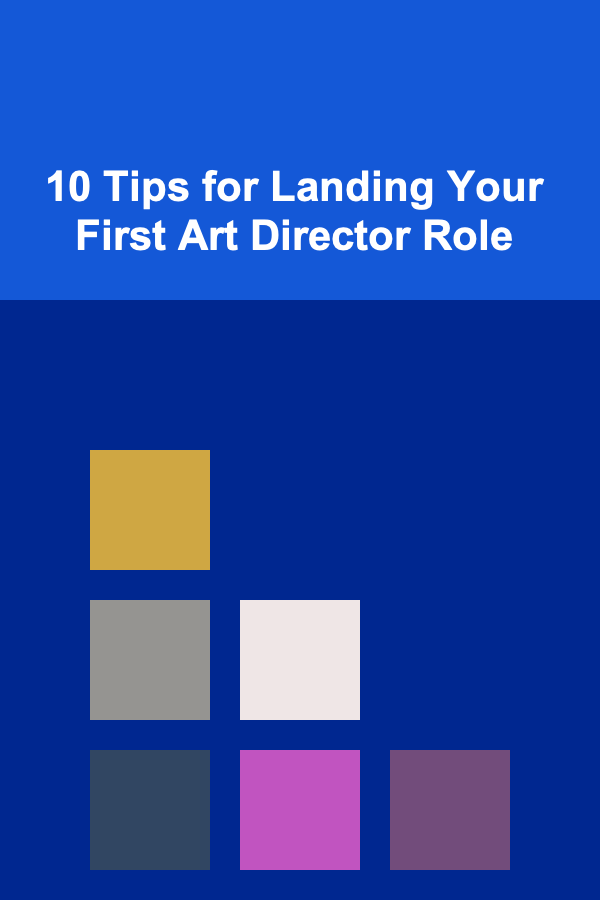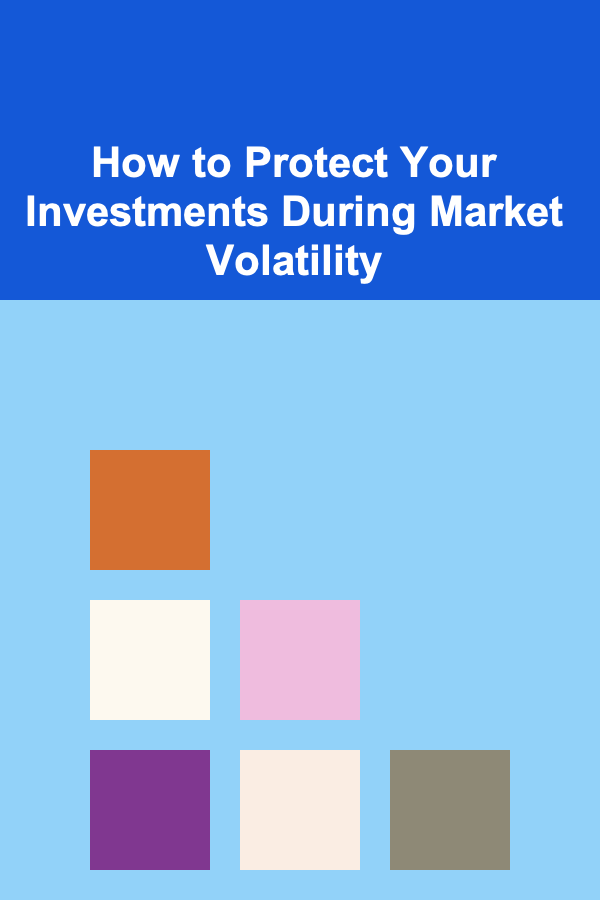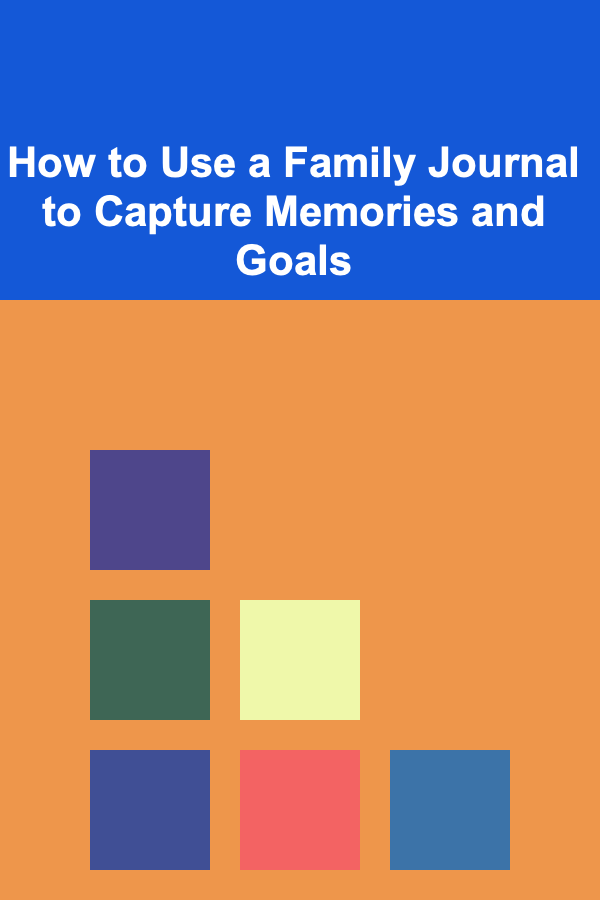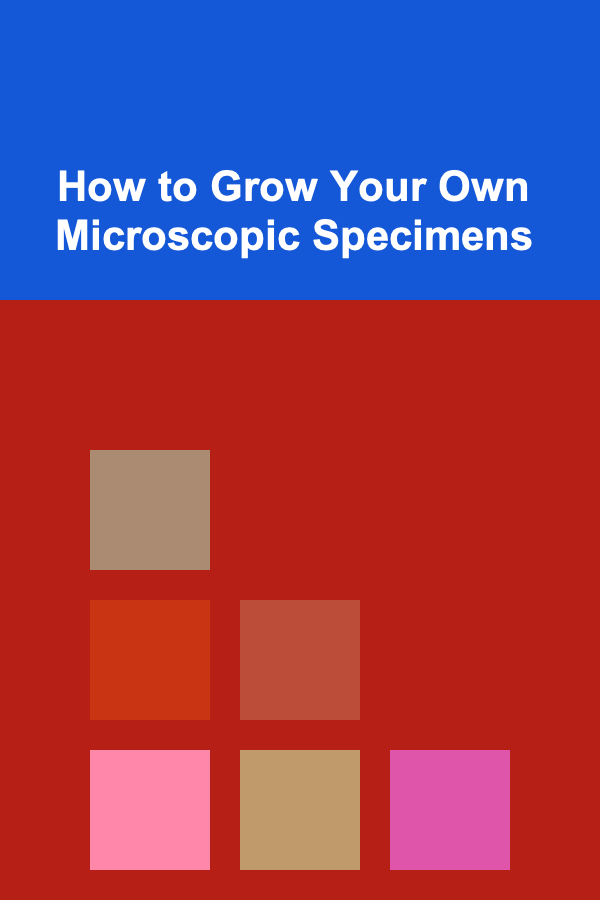
10 Tips for Landing Your First Art Director Role
ebook include PDF & Audio bundle (Micro Guide)
$12.99$6.99
Limited Time Offer! Order within the next:

Breaking into the world of art direction can be both exciting and challenging. As the visual architect behind creative projects, an art director is responsible for shaping the aesthetic vision of a project, whether in advertising, design, film, or other creative industries. Securing your first art director role requires a combination of creative talent, leadership skills, and strategic thinking. If you're eager to take that leap and step into the role of an art director, this guide will provide you with 10 essential tips to help you land your first position.
Build a Strong Portfolio
Your portfolio is your calling card as an aspiring art director. It showcases your skills, creativity, and ability to deliver high-quality visual work. As you build your portfolio, keep the following in mind:
Focus on Variety and Depth
Your portfolio should demonstrate a wide range of projects that showcase your ability to work in different styles and mediums. Include work that covers multiple aspects of design---branding, print, web design, advertising, illustration, or photography---so potential employers can see your versatility.
Show Leadership and Vision
Even as a junior designer or in other roles, look for opportunities to lead projects or work on collaborative assignments. If you've worked on a team, make sure to highlight your contributions to the creative direction and your ability to guide others. If you're still early in your career, showcase any projects where you took charge of a specific aspect of the design, such as concept development, art direction, or client presentations.
Quality Over Quantity
While it's important to include a variety of work, the quality of each piece is more important than the quantity. Avoid filling your portfolio with weak or outdated work just to have more pieces. Every project should be thoughtfully presented and executed to demonstrate your skills and creative sensibility.
Tailor Your Portfolio for the Job
Before applying for a specific role, tailor your portfolio to align with the type of work that the company or agency produces. For example, if you're applying for a job at a fashion brand, showcase design work that aligns with their visual style. Tailoring your portfolio helps demonstrate your understanding of the company's aesthetic and values.
Gain Experience in Design Roles
To step into an art director position, you typically need some solid design experience. Whether through internships, junior design roles, or freelance work, gaining hands-on experience in design will help you develop the skills needed for an art director role.
Start as a Junior Designer
Begin your career as a junior designer or a similar entry-level position in a creative team. This will give you the opportunity to work on diverse projects, collaborate with experienced designers, and learn how art direction comes together in the production process.
Take on Freelance Projects
Freelance work is an excellent way to gain diverse experience and build a strong portfolio. By working with clients directly, you'll develop an understanding of how to meet client needs while maintaining creative integrity. Freelance work can also help you expand your professional network.
Learn from Mentors
Look for opportunities to work with or learn from senior designers or art directors. A mentor can provide valuable insights into the creative process, leadership skills, and the nuances of managing a team. Observe how they approach projects, lead creative discussions, and handle client feedback.
Develop Your Leadership and Communication Skills
Art directors are not only responsible for creating beautiful designs but also for leading teams and communicating effectively with clients. Strong leadership and communication skills are key to success in this role.
Leadership Skills
As an art director, you'll need to motivate and guide a team of designers, photographers, illustrators, and other creatives. Being able to inspire your team and maintain a clear vision throughout the project is crucial. Take on leadership roles whenever possible, whether it's leading a small team on a project or volunteering to manage creative tasks in group settings.
Communication Skills
Effective communication is vital for an art director. You'll need to present ideas clearly, explain the reasoning behind design decisions, and collaborate with clients, writers, photographers, and other stakeholders. Work on improving your ability to articulate your ideas and listen actively to others' feedback. Practice presenting your designs in a way that showcases your thought process and demonstrates your problem-solving abilities.
Team Collaboration
As much as the art director's role is about providing direction, it's also about collaboration. Working closely with designers, photographers, copywriters, and other team members is key to producing a cohesive final product. Be open to feedback, encourage constructive criticism, and foster a collaborative atmosphere where everyone's ideas are valued.
Stay Updated with Design Trends
Art direction is an evolving field, and staying current with design trends, tools, and technologies is essential for success. Being aware of the latest trends helps you create designs that are not only visually appealing but also relevant to today's audiences.
Follow Design Blogs and Industry Publications
There are countless design blogs, websites, and magazines where you can keep up with the latest trends, techniques, and industry news. Some popular sources include AIGA , CreativeBloq , Behance , DesignWeek , and It's Nice That. Subscribe to these and make a habit of reading and engaging with them regularly.
Experiment with New Tools
Technology plays a huge role in design, and the tools you use can significantly impact the outcome of a project. Familiarize yourself with the latest design software and tools, including Adobe Creative Suite, Sketch, Figma, or other specialized software. Mastering these tools will improve your efficiency and help you stay competitive in the job market.
Attend Design Events and Conferences
Design conferences, workshops, and networking events are great places to learn from experts, meet fellow designers, and discover new trends in the field. Attending industry events allows you to stay inspired, build connections, and learn new techniques that can enhance your own work.
Build a Network of Contacts
Networking is essential when trying to land any job, and art direction is no exception. Building a network of creative professionals, clients, and industry contacts will open doors and provide you with opportunities that might not be advertised publicly.
Connect with Other Creatives
Start by connecting with fellow designers, photographers, illustrators, and other professionals in the creative field. Join online communities such as LinkedIn, Dribbble, Behance, and Instagram, where you can showcase your work and engage with others in the design industry.
Attend Networking Events
Look for networking events, conferences, or workshops in your area where you can meet creative professionals and potential employers. Networking in person can help you build meaningful relationships and gain insight into the industry.
Reach Out to Agencies and Companies
Don't wait for job openings to appear. Take the initiative to reach out to agencies or companies you admire. Express your interest in working with them and ask if they have any freelance or junior positions available. Even if they don't have open roles at the moment, your proactive approach might leave a lasting impression.
Focus on Your Conceptual Thinking
Art direction goes beyond aesthetics---it's about conceptualizing ideas and solving problems visually. Employers are looking for art directors who can come up with creative concepts and execute them in a way that communicates a message effectively.
Develop Your Creative Process
Focus on building a strong creative process that helps you generate ideas, refine them, and present them clearly. When working on a project, start by researching the client's needs and the target audience. Brainstorm ideas, create mood boards, and explore different approaches to solving the design problem before finalizing your concept.
Think Beyond Design
An art director's role often involves developing concepts that align with broader marketing and branding strategies. Consider how your designs can support not just the aesthetic goals but also the messaging, brand identity, and business objectives of a project. This holistic approach will make you stand out as a well-rounded art director.
Understand the Business Side of Creative Work
Art directors need to balance creativity with business considerations. Understanding the commercial side of the industry is essential for managing budgets, timelines, and client expectations.
Learn Project Management
Art directors often manage multiple projects at once, overseeing budgets, timelines, and deliverables. Develop skills in project management, whether through formal courses or self-study. Being able to effectively juggle multiple projects while maintaining a high level of creative quality is a key skill for an art director.
Manage Client Relationships
As an art director, you'll be working closely with clients to understand their needs, refine their brief, and present your creative ideas. Cultivate strong client relationship skills, ensuring that you can effectively communicate with clients and meet their expectations.
Seek Feedback and Continuous Improvement
To grow in your role and move closer to an art director position, it's important to seek feedback and always look for ways to improve your work.
Regularly Ask for Feedback
After completing a project, ask colleagues, mentors, or clients for feedback. Constructive criticism helps you improve your craft and allows you to see your work from different perspectives.
Reflect on Your Work
Take time to evaluate your design work and identify areas for improvement. Whether it's your design technique, your creative process, or your leadership skills, always seek ways to evolve as a designer and future art director.
Create a Personal Brand
As you start building your career in art direction, it's important to establish a personal brand. A unique, recognizable personal brand will help you stand out and attract potential employers or clients.
Develop a Consistent Visual Identity
Your personal brand should be reflected in your portfolio, resume, and social media presence. Create a consistent visual identity that communicates your aesthetic preferences, personality, and professional values.
Promote Your Work
Use platforms like Behance, Dribbble, and Instagram to showcase your design work. Regularly update your portfolio and engage with your audience by posting your creative projects, process shots, and insights into the design world.
Be Patient and Persistent
Landing your first art director role may take time. It's important to remain patient and persistent throughout the process. Keep honing your skills, expanding your network, and staying focused on your long-term goals.
Conclusion
Securing your first art director role is a journey that requires creativity, experience, leadership skills, and perseverance. By building a strong portfolio, gaining relevant experience, improving your leadership and communication skills, and staying committed to continuous learning, you'll be well on your way to becoming an art director. Stay patient, keep pushing forward, and your opportunity will come.
Reading More From Our Other Websites
- [Home Lighting 101] How to Incorporate Statement Lighting Fixtures into Your Home
- [Home Pet Care 101] How to Handle Aggressive Behavior in Dogs
- [Home Family Activity 101] How to Conduct Family Science Experiments That Are Both Fun and Educational
- [Home Party Planning 101] How to Plan a Formal Dinner Party on a Weeknight
- [Home Security 101] How to Choose the Right Door Lock Cylinder for Maximum Security
- [Beachcombing Tip 101] Hidden Treasures: Uncovering Rare Shells from Remote Ocean Depths
- [Home Lighting 101] Best Lighting for Home Sustainability: Eco‑Friendly Options That Save You Money
- [Home Holiday Decoration 101] How to Decorate Your Mantel for a Beautiful Holiday Look
- [Home Space Saving 101] How to Optimize Closet Space with Creative Solutions
- [Home Pet Care 101] How to Prevent Your Pet from Chewing on Household Items

How To Approach Recruiters on LinkedIn
Read More
How to Make Money Online as a Nutritionist: 10 Actionable Ideas
Read More
How to Protect Your Investments During Market Volatility
Read More
How to Use a Family Journal to Capture Memories and Goals
Read More
How To Incorporate CBD Oil into Your Skincare Routine: A Comprehensive Guide
Read More
How to Grow Your Own Microscopic Specimens
Read MoreOther Products

How To Approach Recruiters on LinkedIn
Read More
How to Make Money Online as a Nutritionist: 10 Actionable Ideas
Read More
How to Protect Your Investments During Market Volatility
Read More
How to Use a Family Journal to Capture Memories and Goals
Read More
How To Incorporate CBD Oil into Your Skincare Routine: A Comprehensive Guide
Read More